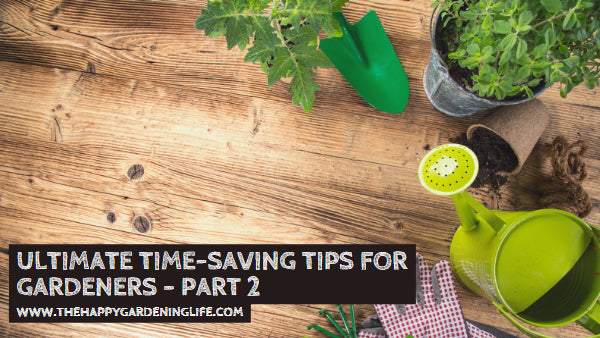
Ultimate Time-Saving Tips for Gardeners – Part 2
Share
 Want more gardening advice to save you more time? Here’s the second half of our Ultimate Time-Saving Gardener Tips series!
Want more gardening advice to save you more time? Here’s the second half of our Ultimate Time-Saving Gardener Tips series!
Home gardeners who are also busybodies can really make use of these simple methods from Better Homes and Gardens. The trick to time-efficient gardening is not to work quicker and harder, but rather to apply smart solutions that will maximize the time and effort you spend in the garden.
With the help of Better Homes and Gardens’ 14 useful tips, you can significantly and wisely reduce your gardening time. This will allow you to keep your vegetable garden in top shape while you get on with other things in your life.
So what are you waiting for? Follow these awesome tips now so you can efficiently manage your time and be able to enjoy your favorite hobby!
If you want to view the first part of this series, CLICK HERE.
If you want to share this blog post online, simply click the social buttons on this page.
Time-Saving Gardening Tips
1. Grow the things your family most likes to eat
They’ll be more eager to help with the harvest. Mix your vegetables into your flowerbeds or put some in pots with the flowers. This way they’ll be more conveniently located and easier to tend.
2. Grow rhubarb, asparagus, and perennial herbs
All are edibles that don’t have to be replanted each year.
3. Raise the beds, lower the maintenance
Raised beds warm up sooner in spring, and you can sit on the edge to plant and harvest.
4. Plant more vegetables in less space
A compact vegetable garden will take less time to plant and harvest.
5. Great soil will cut back on maintenance
Improving it with compost and other forms of organic matter is the secret to independent plants. Not only does highly organic soil hold more water and nutrients, but it will support healthier plants and fewer weeds.
6. Cut back on fertilizing time with a slow-release plant food
These pelleted fertilizers you mix into the soil release nutrients all season long. You can even buy potting soil with the slow-release plant food already added.
7. Mulch, mulch, mulch
Covering the soil with an organic mulch of compost or bark chips feeds the soil, seals in moisture, and blocks out weeds.
8. Water less often, but for longer periods of time
A deep soaking once a week is better for your plants than frequent shallow drinks. Thorough soakings encourage deep roots, which means you’ll water less as the summer wears on.
9. Use a decorative sprinkler you can leave out on the lawn all summer
A hose holder that reels in the excess hose is also a handy way to keep things tidy.
10. Make wood chips out of fallen branches with a shredder/chipper
Use the chips on top of newspaper or cardboard as natural-looking weed-blocking material for your pathways.
11. Behead the weeds instead of pulling them
A sharp hoe or string trimmer can slice off the weeds at ground level. Decapitate the weeds on a sunny day, and the roots will dry up as well.
12. Group all the thirsty plants together near your water source
It’s the most efficient way to conserve time and water.
13. Use large pots for your container gardens
The more soil your pots hold, the more food and water they hold.
14. Save time looking for your most used tools
Convert an old nightstand or chest of drawers into handy garden-supply storage you can keep on your covered porch or patio.
Article Source: Better Homes and Gardens
